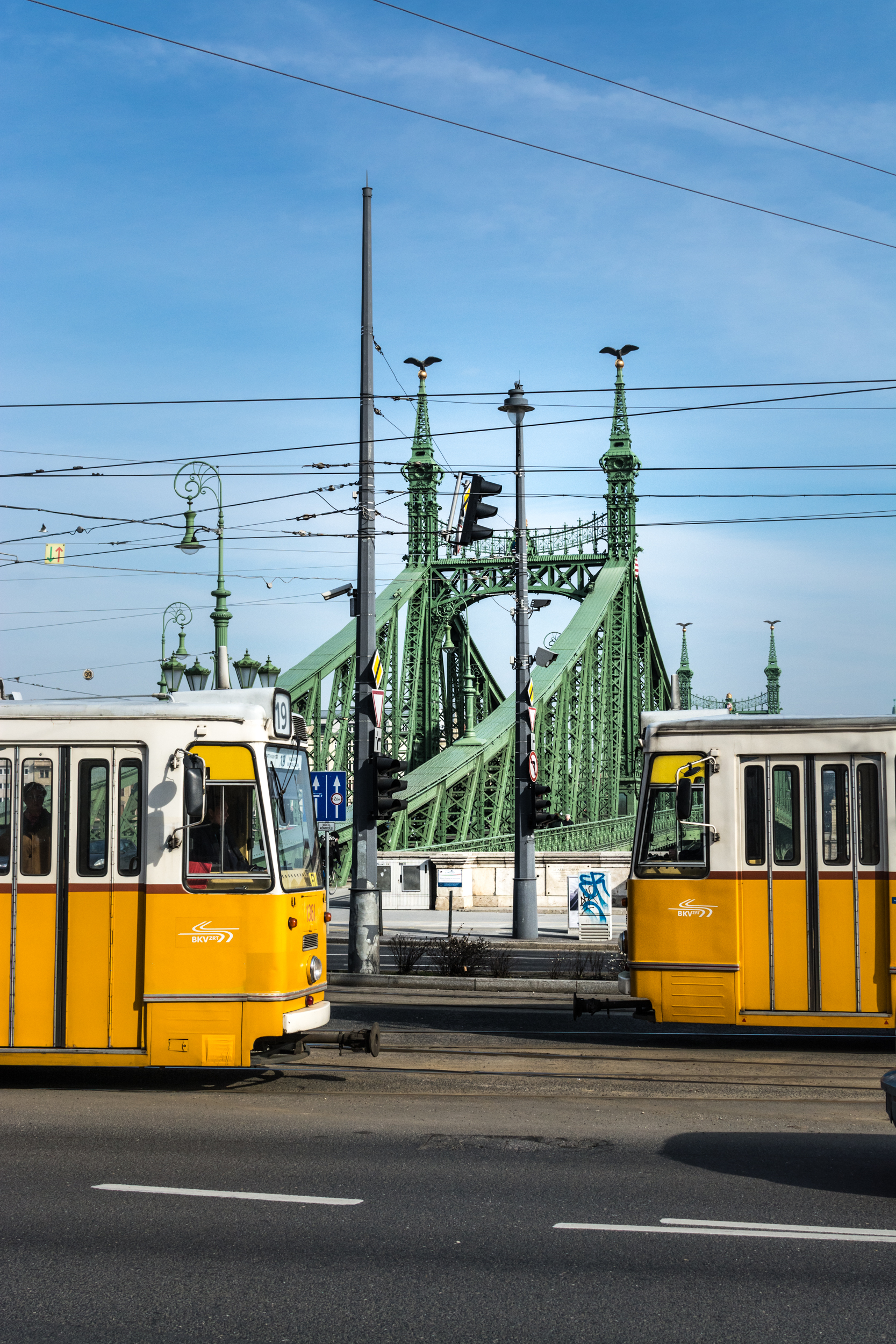One of the many great things about Budapest is the city’s excellent and affordable transport network. There are buses, trams, trolleybuses, suburban trains, boats and even a cogwheel railway. The city is a major budget-air destination (although there is no national airline) and an important rail hub.
Arrival

The 100E bus is the best way to get from the airport to town by public transport. Taking 45 minutes, it calls at Kálvin tér, Astoria and Deák Ferenc tér, all within a short walk of each other in the city centre. As you exit Arrivals, you see the bus stop and English-friendly ticket machine past the taxi kiosk. Tickets cost 1,500 forints – look out for the plane logo on the screen. Machines accept credit cards and Hungarian forints (change given), drivers take cash only. The 100E runs every ten minutes – the first sets off from town at 3.30am and the last service pulls out of the airport at 1.30am.
For details of other ways to get from Budapest Airport to town, see our guide here
The three main rail stations are Keleti, Nyugati and Déli. Each has its own metro station (indicated with the word pályaudvar next to the name). The international bus station is at Népliget, on main tram line 1. It’s also on blue metro line 3, currently under renovation.
Getting around
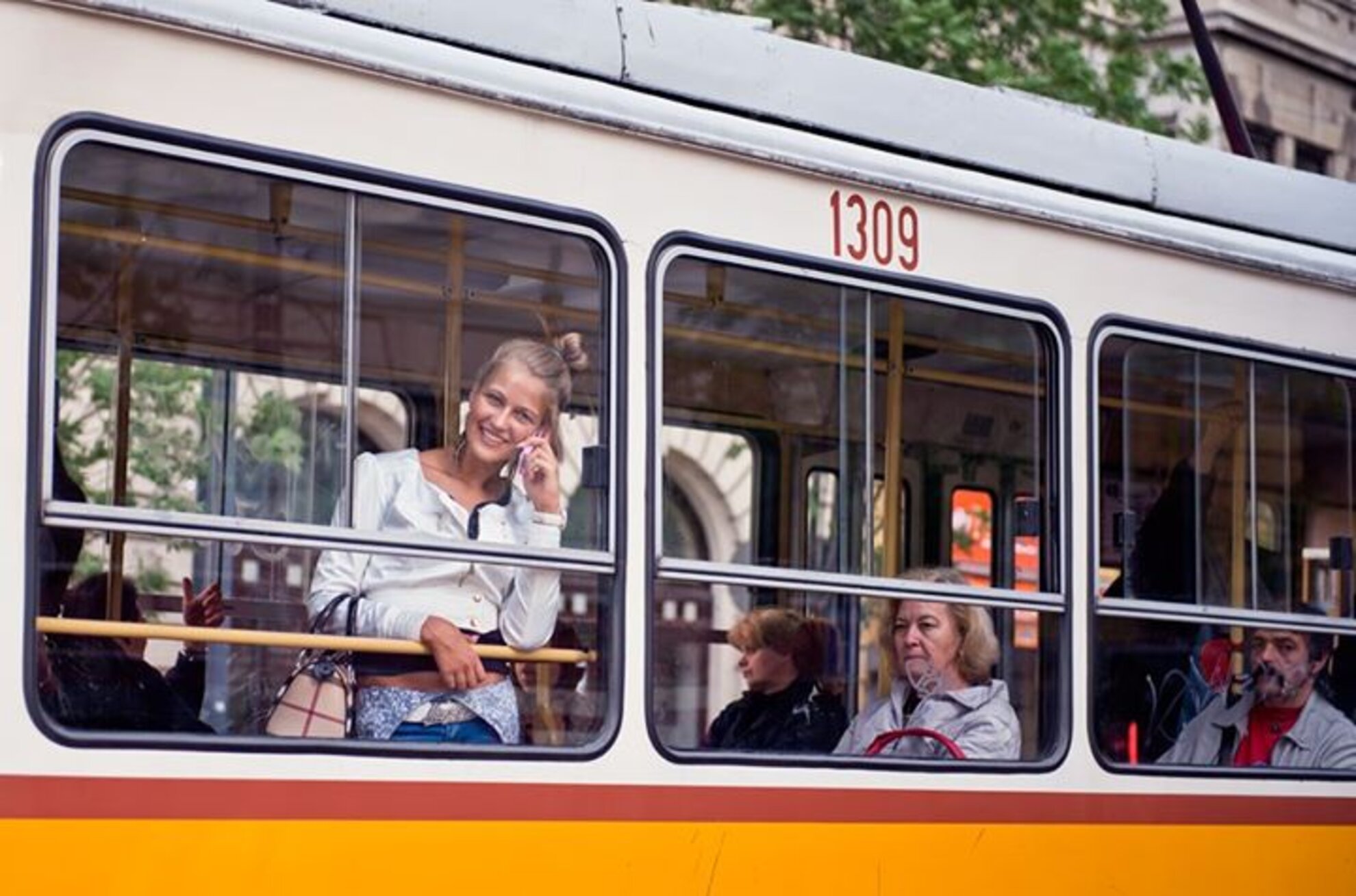
Budapest transport is overseen by BKK. There are four metro lines, although one, the blue M3, is under long-term renovation along its middle and southern sections. Trams and buses are plentiful – the 4/6 tram serves the main artery through Pest, the Nagykörút, every few minutes and the 6 runs all night. There are night buses, too.
Tickets & information
All main forms of transport run on the same ticketing system. Here's our comprehensive guide to getting around town. See here for maps and here for timetables.
The best way to buy tickets and access timetables is via the BudapestGO app, available for Android and iOS. It works as a Trip Planner, allows you to save your favourite destinations, consult the timetables and even check the availability of bicycles around the city. It also now includes the BKK Info app which informs you in real time of accidents, changes and delays.
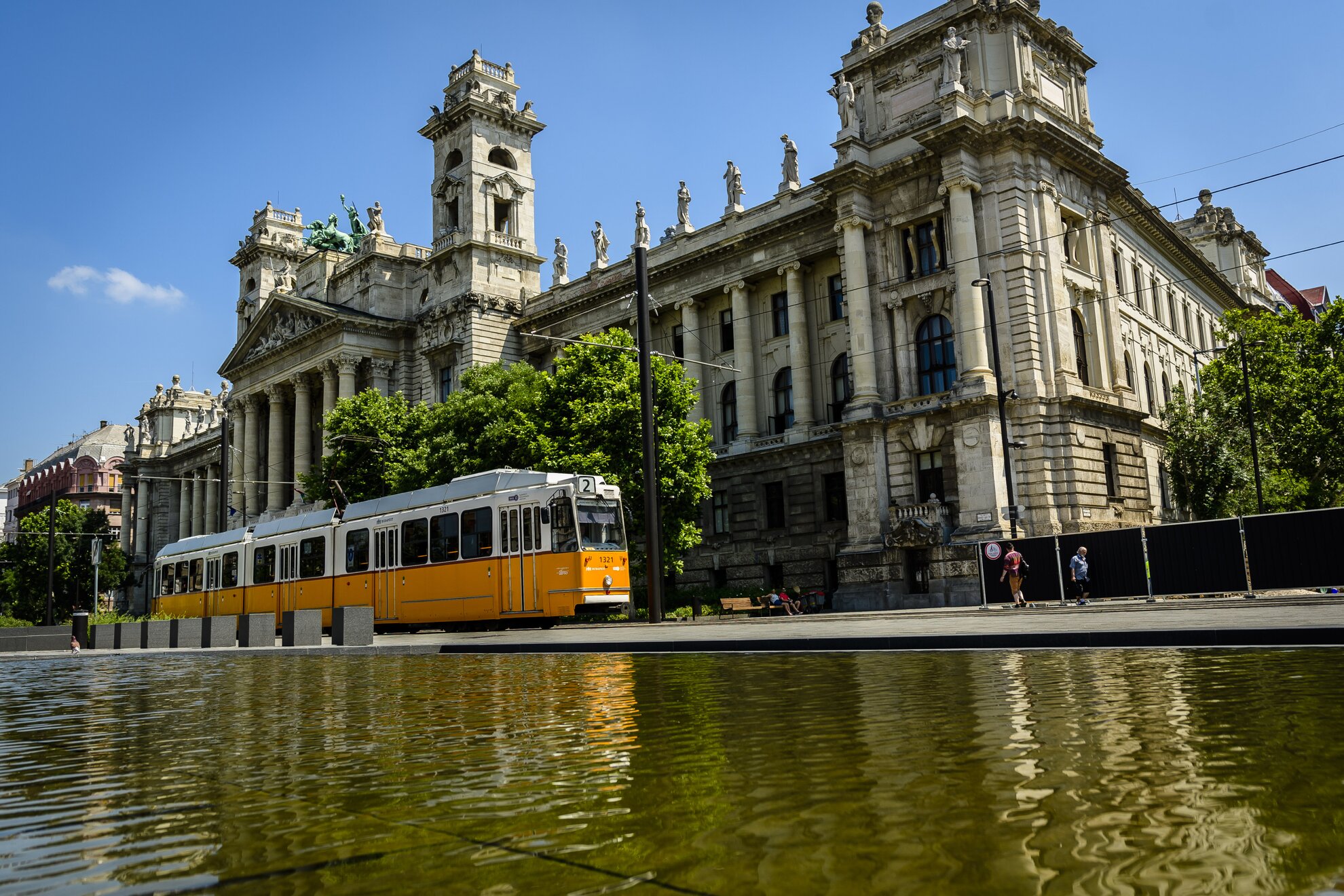
There are still paper tickets, too, distributed via machines at metro stations, tram and bus stops. They are English-friendly, and take cards and Hungarian forints in cash. Budapest transport company BKK has offices at key stations such as Deák Ferenc tér, Déli pályaudvar. Newsstands also sell tickets. You can also buy from the driver on buses and trams (see below).
A single ticket (vonaljegy, HUF 350) is for any one-way, uninterrupted ride on any bus, tram, trolleybus or
metro line from one end of the line to the other. There are transfer and
time-based tickets, too. More information
A ticket purchased on board from the bus or tram driver costs 450 forints. More information
Student discounts
Discounted tickets are available for students (HUF 3,450/month) but only for those holding an EU university student card. Quarterly and semester passes are also available. You will need to have photo ID when you purchase – a student or ISIC card are also good. Lost passes cannot be replaced. Most Hungarians carry their pass in the back of their mobile case.
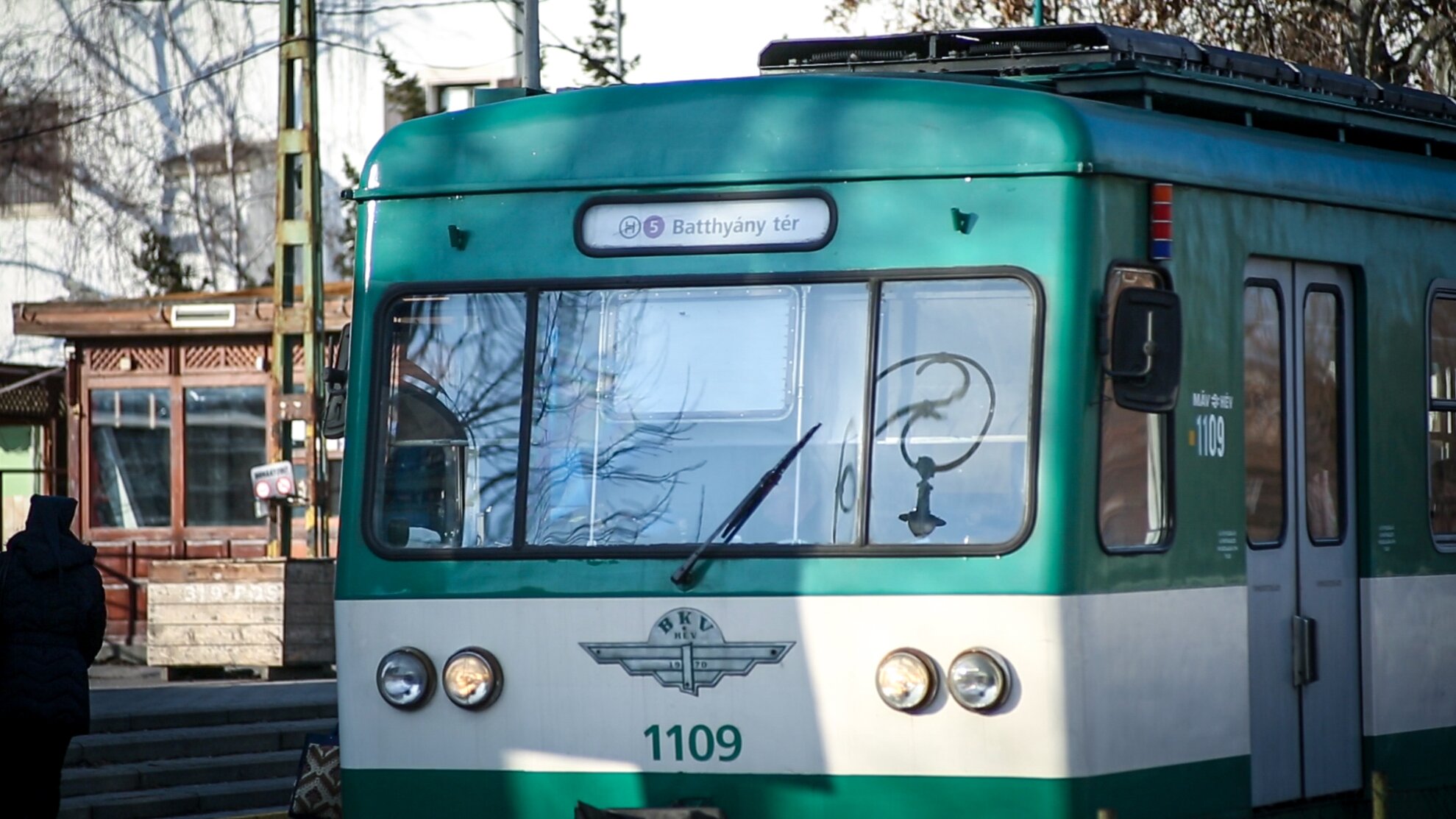
Some buses and all HÉV suburban trains venture beyond the city limits, and travelling to and from them requires additional tickets. These can also be purchased at machines and BKK offices. Supplements are charged from 10km beyond town, then in 5km increments. See prices here. Tourist-friendly Szentendre, the most popular option, requires a 310-forint levy, for example. Other destinations include Gödöllő with its grand palace and gardens, and pretty Ráckeve.
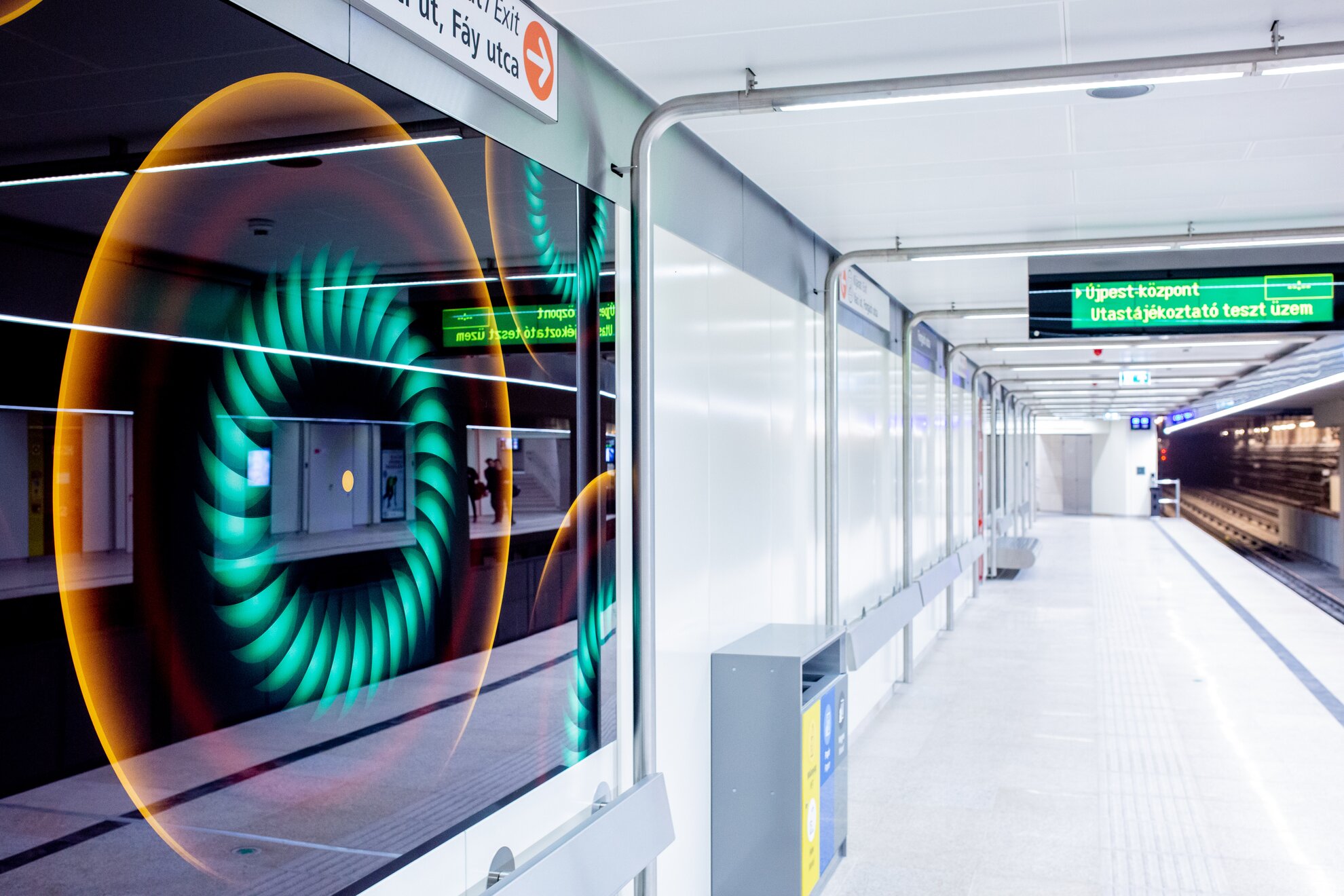
Wheelchair access is available on many transport lines. Over 90% of buses in Budapest have low-floor capabilities. Red Metro line 2 has barrier-free access at Örs vezér tere, Pillangó utca and Puskás Ferenc Stadion. Metro 3 is currently under long-term renovation. The newest stations on the northern section, between Göncz Árpád Városközpont and Újpest-központ. Other stations should follow suit as they are unveiled. Metro 4 is accessible by lifts in all stations. More information, including details of parallel routes by bus or tram should step-free access by metro not by available.
Bicycles can be transported on several tram and bus lines, one trolleybus route and all HÉV suburban railway lines but you will have to buy and validate an extra single ticket. All details are given here.
Dogs can ride for the price of an extra ticket but they cannot take up a seat, and must be carried on the metro escalators. Those being carried as hand luggage in a closed container do not require an extra ticket. Guide dogs are also exempt. Dogs must be on a leash and wear a muzzle. More information
Cycling
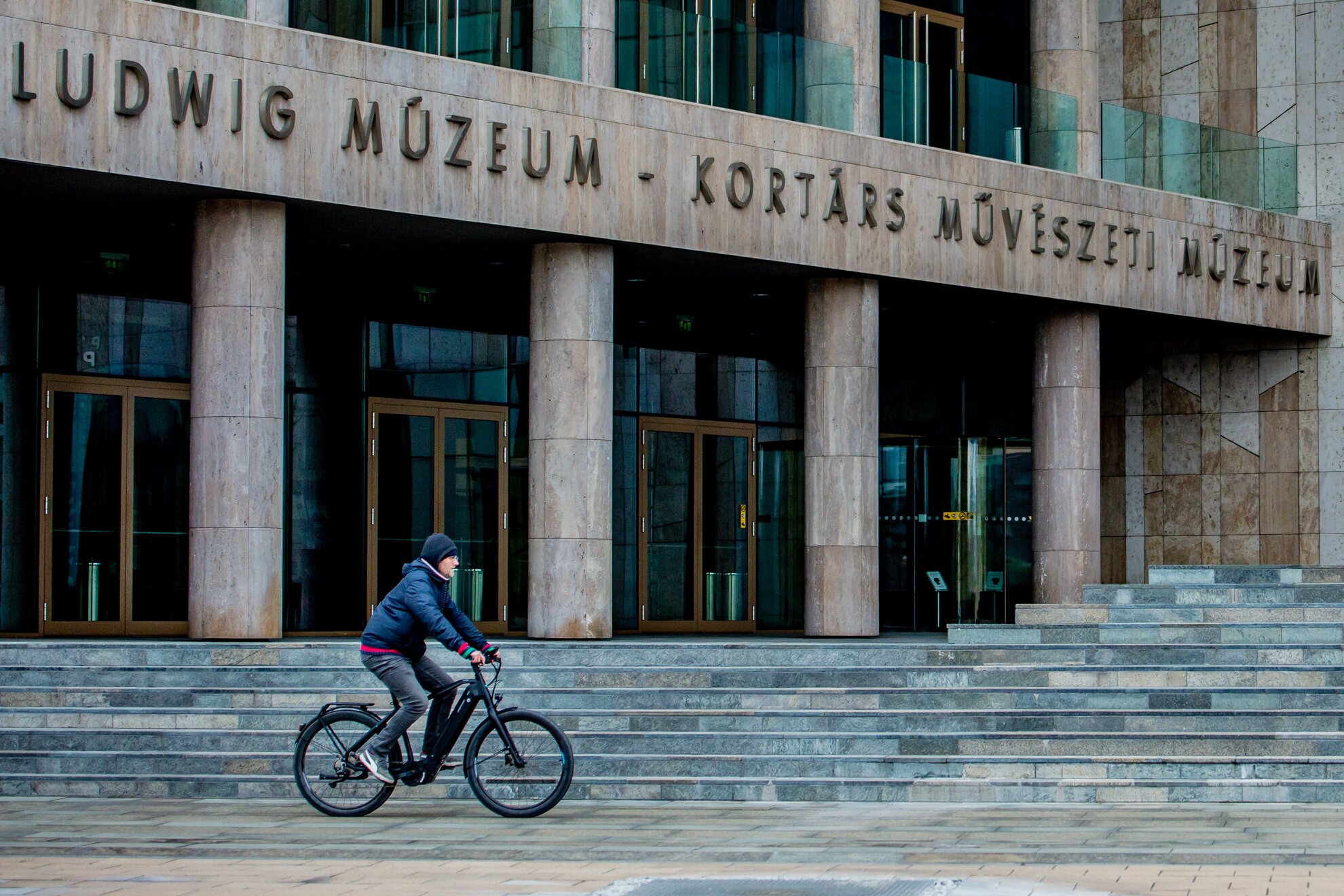
Budapest is pretty bike-friendly, with plenty of cycle lanes and picturesque routes. Rental prices are very cheap, especially for a monthly pass. Bubi is the public rental bike service in Budapest and Hungary. You can download the app but also check availability via BudapestGo. Donkey Republic works in similar fashion, you unlock the bike and pay from the app.
Electric scooters
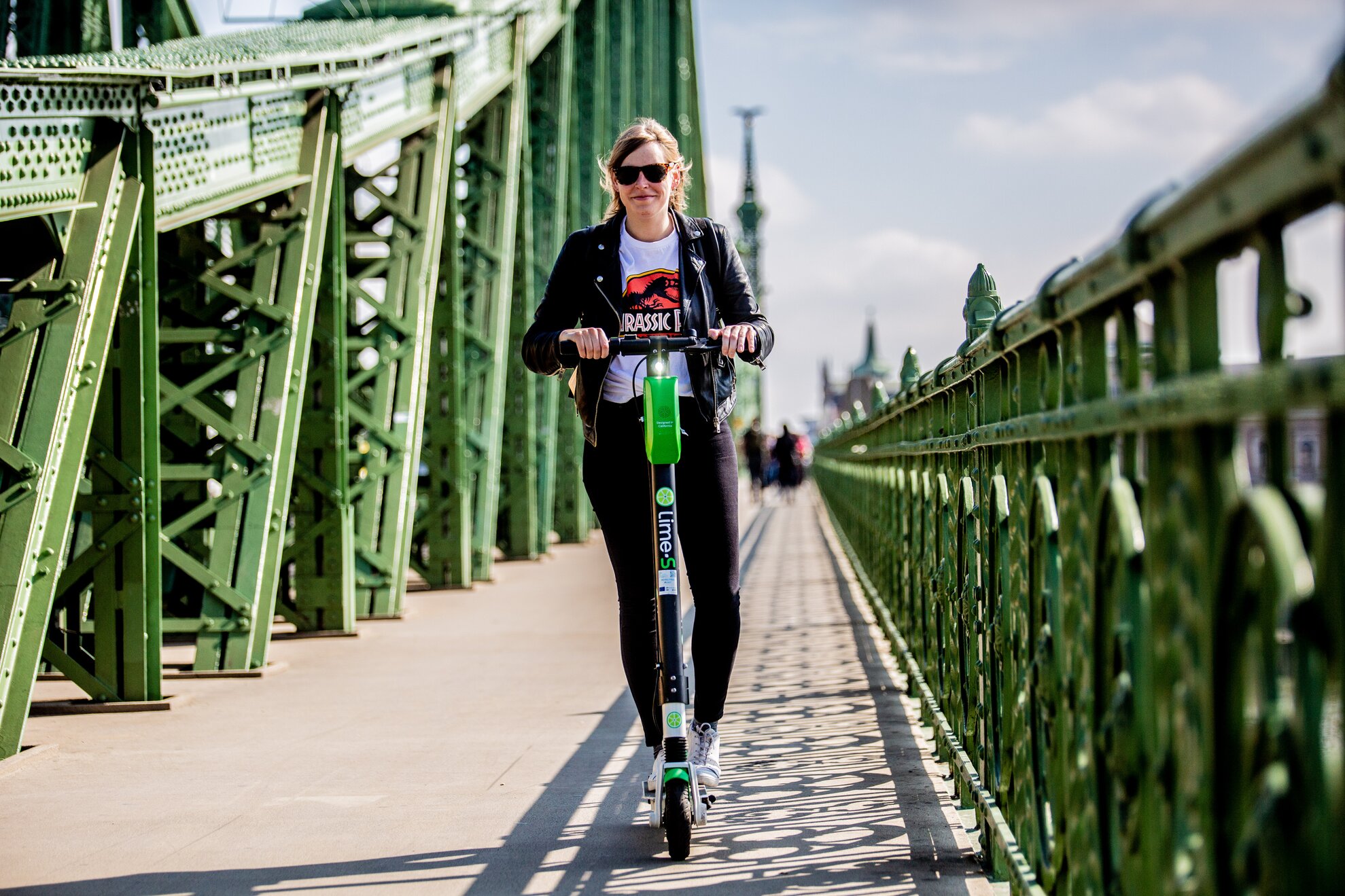
Renting an electric scooter can also be a fun and fast way to roam around the city. The Lime app shows where to find your scooter once you’ve added your method of payment. Wearing a helmet is not mandatory but recommended. You can also use Blinkee if you have a driver’s licence and would like to ride a bigger scooter. The app will do a verification of your documents and you will be able to use them for faster or longer trips.
Taxis
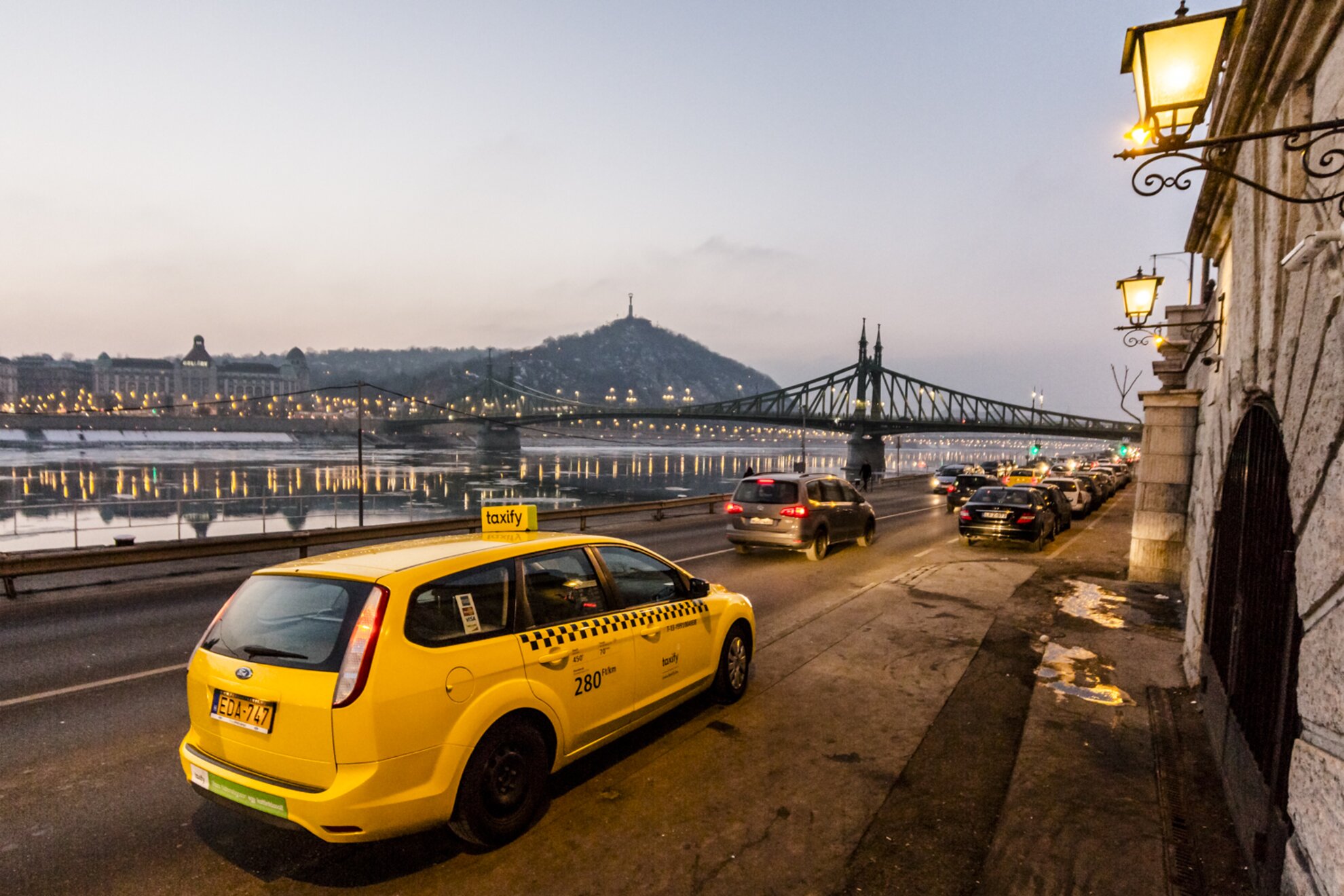
Taxis are available for 400 HUF/km, 100 HUF/minute, plus a basic fee of 1,000 forints. Firms include Főtaxi (+36 1 222 2222, +36 20 222 2222, +36 30 222 2222; +36 70 222 2222 and 6×6 Taxi (+36 1 666 6666). The main popular alternative is to use the Bolt app. It works like an Uber but also acts as a food and grocery delivery service.
Car rental
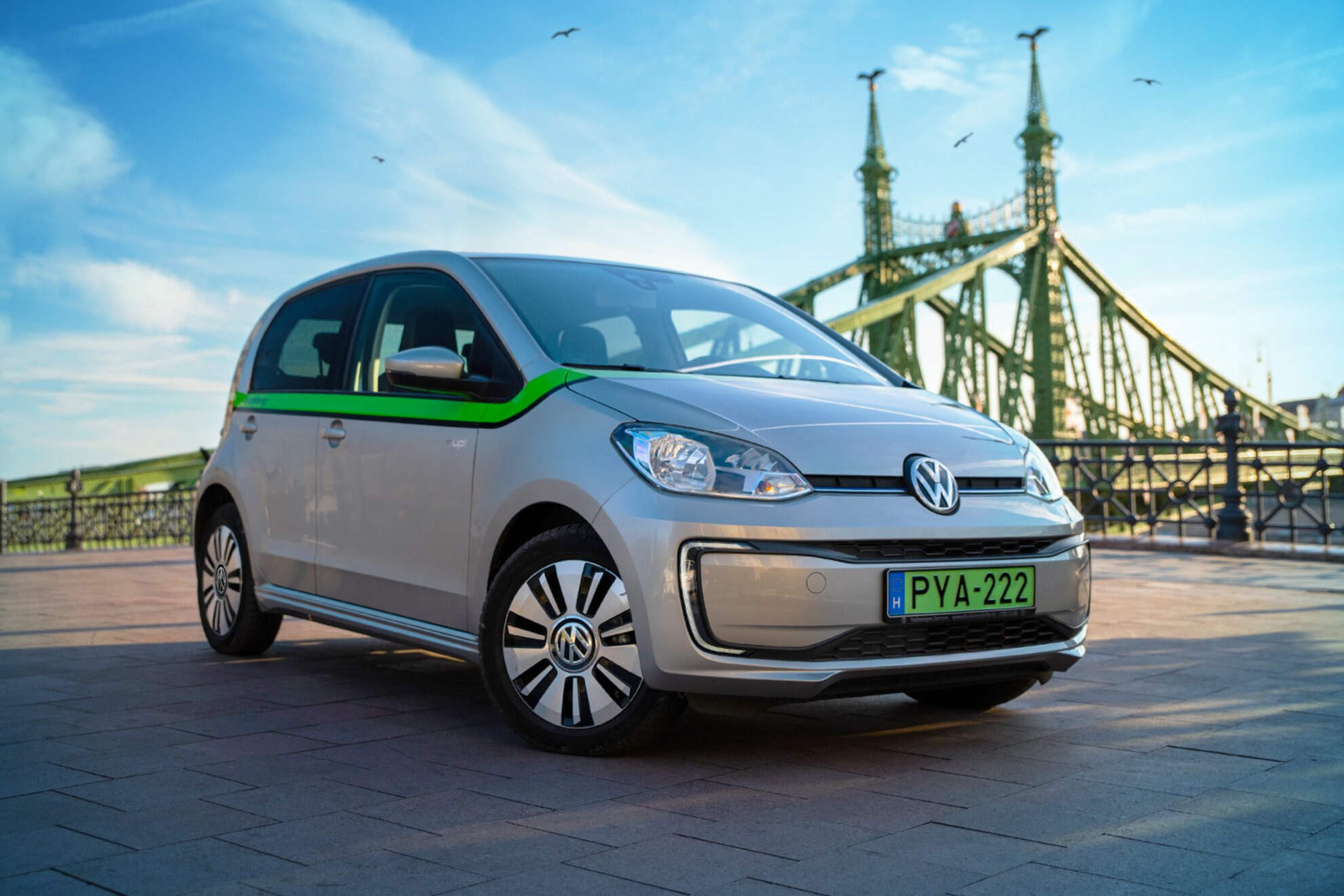
Limo works the
same way as the Bubi rental service (see above Cycling). You will
be asked to upload your driver’s licence to activate your profile. Once it’s
done you can check out the availability of cars around you and find the
most convenient deal for your journey.
For an eco-friendly ride you can also
share a car with other users to reduce the costs with Share Now (Hungarian-only site), or rent an electric vehicle through GreenGo.
